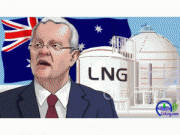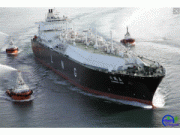免职声明:本网站为公益性网站,部分信息来自网络,如果涉及贵网站的知识产权,请及时反馈,我们承诺第一时间删除!
This website is a public welfare website, part of the information from the Internet, if it involves the intellectual property rights of your website, please timely feedback, we promise to delete the first time.
电话Tel: 19550540085: QQ号: 929496072 or 邮箱Email: Lng@vip.qq.com
摘要:North America is forecast to overtake Qatar and Australia to be the world’s number one liquefied natural gas exporter by the end of the decade, according to Citi Research energy analyst Eric Lee.
|
"US and Canadian supply by the end of this decade maybe can make up 20% of the global LNG market. Ahead of Qatar, ahead of Australia,” Lee told delegates at AOGC 2013. However, there are question marks over the commercial viability of some proposed liquefaction projects such as Alaska LNG, which industry sources said comes with a $65 billion price tag. “I think the Alaska project probably has reasonable economics... there’s just a lot of risks around fiscal terms, the capital costs of building the pipeline, the long lead time in getting it [the gas] to market. If you just look at the straight economics, it does compete with the other projects in America. It’s the other risks, the risk profile,” said ConocoPhillips’ chief economist, Marianne Kah in the Thought Leaders Forum. ConocoPhillips, ExxonMobil and BP are the three main North Slope gas producers in Alaska that would likely be supplying feedstock gas to the proposed grassroots liquefaction project. Where the participants at the Thought Leaders Forum - Kah, Lee and Emma Cochrane, All three said that they expect a significant increase from the approximate 1 million barrels per day output last year. Lee said that the International Energy Agency envisages production of US light, tight oil reaching between 3.2 million and 3.5 million barrels per day later this decade. “Our outlook is a little bit more aggressive. We see perhaps four million barrels per day of light tight oil... not including natural gas liquids and condensate by 2020,” said Lee. Kah was even more bullish, saying: “I’m fairly optimistic about what can come of tight oil production. I could easily see the US getting to five million barrels per day in 2020.” “The bigger issue is whether we can build the infrastructure fast enough to utilise it and how much of it the US refineries can actually utilise because it is not legal to export crude from the US,” she said. The US today exports a limited amount of crude from Eagleford plays to Canada but permits are required on a cargo-by-cargo basis from the Department of Commerce and not often granted, according to Cochrane. Under US law there are three products that cannot be exported, added Kah: “Some type of treated lumber, wild horses by ship – you can export them by some other means but not by ship – and crude oil.” The Thought Leaders Forum was chaired by AOGC 2013 conference chairman Fereidun Fesharaki. AOGC 2013 said that this year’s conference is designed “to provoke as much debate as possible”.
|















